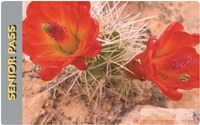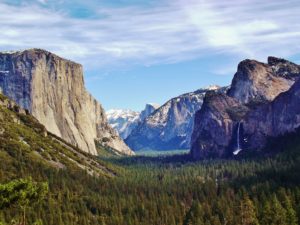One of the best perks for turning 62 — if you’re a U.S. citizen or lawful permanent resident — is the “Senior Pass” that allows those aged 62 and over to enter any of the U.S. national parks, monuments, and recreation areas for all of ten bucks. Let me repeat that. That’s a “ten” with one zero.
And that’s not all, fellow baby boomers! The pass is good for life. It never expires until you do (and if you never expire, so much the better!).
And wait, there’s more! You can get your pass as you drive into many of those same parks and recreation areas. Just ask the attendant at the gate, show some proof of age (driver’s license is good), and you can usually get your pass on the spot. For $10.
Those under 62 can buy an “America the Beautiful” pass for $80, which is good for up to four people in one vehicle — but it’s only good for a year.
If you can’t wait and want to get one online, it will cost you $20 — still a huge bargain. (Some major parks alone would normally set you back $30 per car for just one visit.)
And one of the best parts? This deal is not available on TV!
An Array of Natural Wonders
OK, you may say. $10 seems like a bargain but what natural wonders and amazing experiences do I get for it?
Glad you asked!
How about the great granite monoliths and waterfalls at Yosemite;
the steaming cauldrons of Yellowstone and Hawaii Volcanoes;
the sheer gargantuan depths of the Grand Canyon;
the eerily beautiful deserts of Death Valley;
the weird hoodoos and spires of Bruce Canyon;
the rugged seascapes of Acadia;
the watery wilderness of the Everglades;
the big, big trees of Sequoia, Kings Canyon, and Redwood;
the vast limestone caverns of Carlsbad and Mammoth Cave;
and the super-scenic mountains of Shenandoah, Great Smoky, Denali, Grand Teton, Rainier, Cascades, Haleakala, and Rocky Mountain— to name just a few.
All this and more for just $10 — for life.
2016 is 100th Anniversary
You may have read that the summer of 2016 marks the Centennial of the U.S. National Park Service, which oversees nearly 400 sites altogether, including national parks, national monuments, recreation areas, memorials and more — so this is an especially appropriate time to pick up a senior pass if you haven’t yet (and, of course, meet the age requirement).
If you’re traveling with kids or grandkids, you’ll want to pick up the special Centennial edition of National Geographic Kids National Parks Guide U.S.A.
It’s the kids ‘companion to the adult-level National Geographic’s Guide to National Parks of the United States, now in its eighth edition and which covers the 59 full-scale national parks.
Actually, I recommend the kids’ guide for adults as well — it’s colorfully designed and filled with lots of fun, fast features like “My Checklist” and “Dare to Explore” that the grown-up book lacks. (Who says baby boomers can’t have a checklist or wouldn’t dare to explore?)
But the first item on your checklist?
Get the Senior Pass, of course. The best bargain in travel.
Fun Facts:
While the National :Park Service dates from August 2016, the first national park — Yellowstone — was established in 1872.
The 59 U.S. national parks drew more than 70 million visitors in 2015 and the entire national park system drew more than 305 million visitors.
The most visited national park is the Great Smoky Mountains, which draws over 10 million visitors per year. The Grand Canyon is a distant runner-up.
The most visited park in the entire National Park System is the Golden Gate National Recreation Area in the San Francisco Bay region, with about 15 million visitors per year.
The least visited national park is Alaska’s Gates of the Arctic, which draws around 12,000 visitors per year.
Alaska also boasts the largest national park, mountainous Wrangell-St. Elias, which, if it were a separate state, would outrank the nine smallest states in size.
The U.S. has national parks in 27 of the 50 states as well as the territories of American Samoa and the U.S. Virgin Islands.
California has the most national parks (nine), followed by Alaska with eight.















Leave a Reply